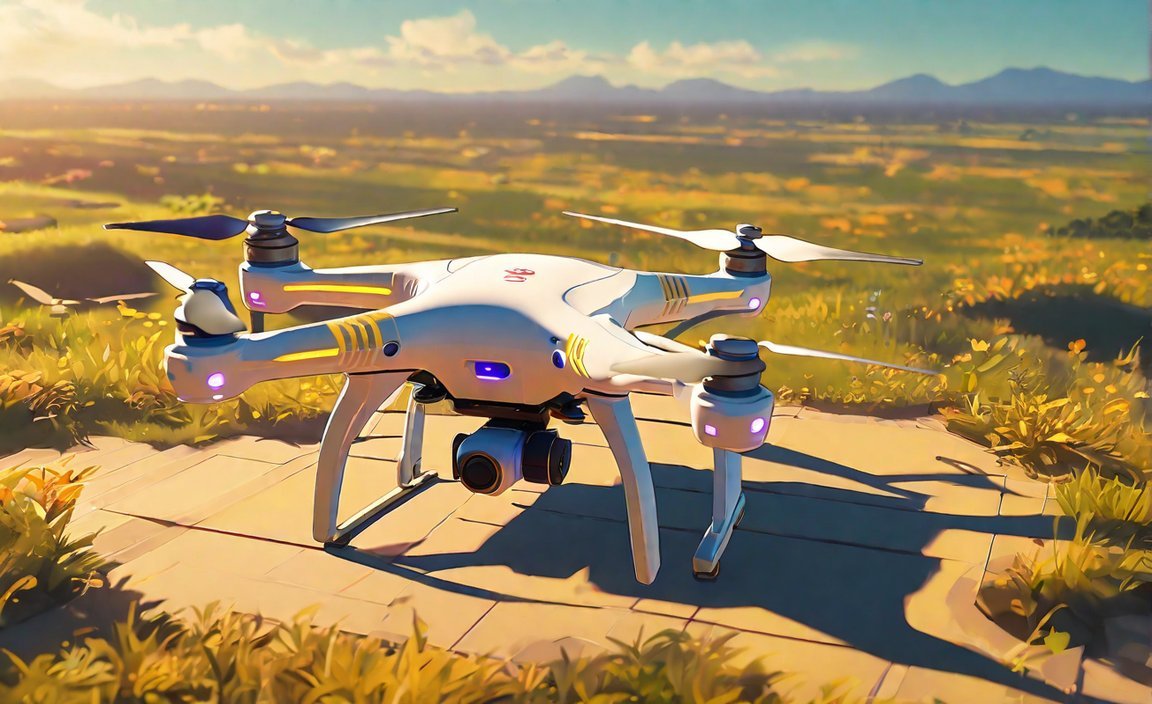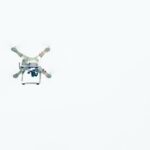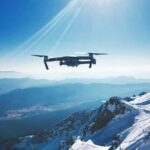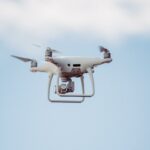Discover Fascinating Facts About Drones. As the world of technology continues to evolve, drones have emerged as a captivating and multifaceted innovation. These unmanned aerial vehicles have become increasingly prevalent in various industries, from photography and videography to delivery and agriculture. However, beyond their widespread popularity, there are a plethora of intriguing details that remain relatively unknown to many. Whether you’re a technology enthusiast or simply curious about these airborne marvels, join us on a journey to uncover captivating facts about drones that will leave you astounded.
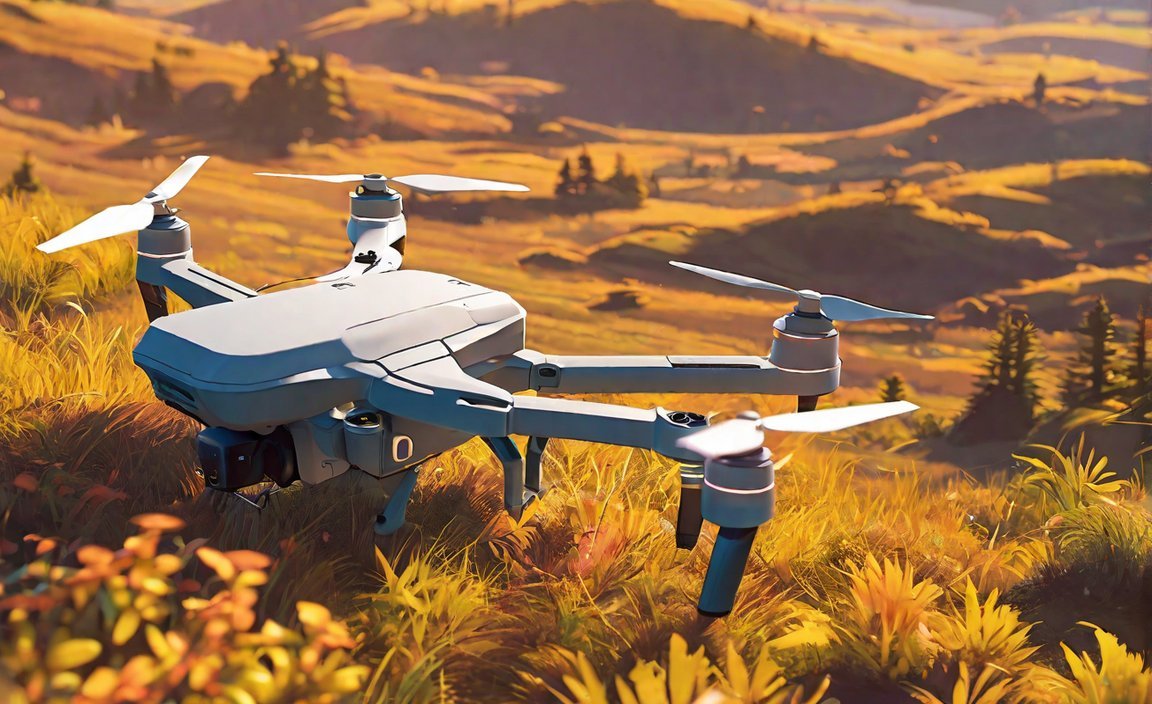
Key Takeaways:
- Drone technology has been explored since the 1800s.
- The first hobby drone was developed by a Hollywood actor.
- The first US drone permit was issued in 2006.
- Various business sectors in Australia utilize commercial drones.
- Drones are also known as UAVs (Unmanned Aerial Vehicles).
- Israel was the first country to build drones.
- Drones are used for humanitarian services.
- Drones are effective tools for farming.
- The US military makes the most use of drones.
- Drones are commonly used for photography.
Facts About Drones
Drones, also known as Unmanned Aerial Vehicles (UAVs), have become increasingly popular in recent years due to their versatility and capabilities. They are no longer just a hobbyist’s toy; drones are now being utilized in various industries and even for humanitarian purposes. In this article, we will explore some fascinating facts about drones that you may not be aware of.
1. Drone Technology in the 1800s?
Believe it or not, drone technology was being explored as early as the 1800s. While it may not have been as advanced as the drones we see today, the roots of this technology can be traced back to almost two centuries ago[^1^].
2. A Hollywood Actor’s Contribution
It might surprise you to learn that the first hobby drone was developed by a Hollywood actor. This shows the allure of drones, compelling even actors to venture into the world of technology[^1^].
3. The First US Drone Permit
In 2006, the first US drone permit was issued. This marked a significant milestone in the history of drone technology, providing a formal framework for their operation within the United States[^1^].
4. Drones in Business Sectors
Australia is home to a wide range of business sectors that utilize commercial drones. These sectors include agriculture, construction, mining, and more. Drones have proven to be invaluable tools in improving efficiency and accuracy in various industries[^1^].
5. Drones and UAVs
Drones are often referred to as UAVs, which stands for Unmanned Aerial Vehicles. These terms are used interchangeably, showcasing the widespread recognition and adoption of this technology[^2^].
6. Israel and Drone Development
Israel holds the distinction of being the first country to build and develop drones. Their early advancements in this field have contributed significantly to the growth and evolution of drone technology[^2^].
7. Drones for Humanitarian Services
Drones are not only used for recreational purposes or commercial ventures; they also serve a crucial role in humanitarian services. Drones can be deployed in disaster-stricken areas to assess damage, deliver medical supplies, and provide aid where traditional methods may be challenging or slow[^2^].
8. Drones as Farming Tools
One of the lesser-known applications of drones is in the agricultural sector. Drones equipped with advanced imaging and sensing technologies assist farmers in monitoring crop health, optimizing irrigation, and assessing field conditions. These capabilities allow for more efficient and sustainable farming practices[^2^].
9. Dominance of US Military
When it comes to the utilization of drones, the US military takes the lead. They heavily rely on drones for surveillance, reconnaissance, and targeted strikes. The advancements in drone technology have significantly transformed modern warfare[^2^].
10. Drones and Photography
Drones have revolutionized the world of photography by providing unique perspectives and breathtaking aerial shots. Whether capturing stunning landscapes or documenting events, drones have opened up new creative possibilities for photographers and videographers[^2^].
In conclusion, the world of drones is full of fascinating facts and endless possibilities. With their historical roots dating back to the 1800s and their widespread applications today, drones continue to captivate both technology enthusiasts and industries worldwide. From their contributions to business sectors and humanitarian services to their creative potential in photography, drones have become indispensable tools in our rapidly evolving world.
So, the next time you see a drone hovering in the sky, remember the rich history, the present-day innovations, and the exciting future that these remarkable devices hold.
[^1^]: 10 Interesting Facts about Drones and Drone Technology
[^2^]: Interesting Facts About Drones In 2021
Here are some intriguing facts about accounting that will keep you entertained: Fun Facts About Accounting
Did you know that the pH level of tomato juice is around 4.2? Check out more fascinating facts about juice here: Facts About Juice
Discover the rich and vibrant world of Mexican food through these captivating facts: Facts About Mexican Food
From sunflower seeds to chia seeds, delve into the fascinating world of seeds with these interesting facts: Facts About Seeds
Raise your cup and learn some marvelous facts about tea, like how it was once used as a form of currency: Facts About Tea
Uncover the secrets of coding and explore its incredible impact on our modern world: Facts About Coding
Happy reading!
The Safety Regulations and Concerns Surrounding Drone Usage
Drones, also known as unmanned aerial vehicles (UAVs), have become increasingly popular and are being used in various industries and recreational activities. However, their rapid growth has raised concerns about safety regulations and potential risks associated with their usage. In this article, we will explore the evolving regulatory framework and the commercial viability of drones, while delving into the safety regulations and concerns surrounding their usage.
The Evolving Regulatory Framework and Commercial Viability of Drones
The deployment of drones has witnessed exponential growth, necessitating continuous evolution of the regulatory framework and associated security measures (source1). At present, there are over 1.1 million registered recreational drones with the Federal Aviation Administration (FAA), highlighting the need for comprehensive regulations to ensure safe and responsible drone operations (source2).
The current regulatory landscape is marked by ongoing debates as state legislatures consider the regulation of drone technology. These discussions take into account various factors, including the benefits of drones, privacy concerns, and their potential economic impact. It is crucial to strike a balance between fostering the growth of drone technology and safeguarding public safety.
Regulatory Gaps and Commercial Viability
Despite the economic benefits that drones offer, their commercial viability is limited by critical regulatory gaps. These gaps refer to the absence of comprehensive regulations that address key aspects of drone operations, such as safety, privacy, airspace management, and licensing requirements.
To ensure the safe integration of drones into our airspace, it is essential to establish robust safety regulations. These regulations should encompass guidelines for safe flying practices, training and certification requirements for drone pilots, and streamlined procedures for reporting any incidents or accidents involving drones.
Key Takeaways:
- The use of drones has grown significantly, leading to the continuous evolution of regulatory frameworks and security measures.
- Over 1.1 million recreational drones are currently registered with the FAA, highlighting the need for comprehensive regulations.
- Ongoing debates in state legislatures revolve around the benefits of drones, privacy concerns, and their economic impact.
- Critical regulatory gaps hinder the widescale adoption and commercial viability of drones.
- Comprehensive regulations addressing safety, privacy, airspace management, and licensing requirements are necessary to eliminate these gaps.
Citation:
– Global Regulation of Drones: Clyde & Co
– Current Unmanned Aircraft State Law Landings: National Conference of State Legislatures
Implications of Drones in Surveillance and Privacy
Unmanned Aerial Vehicles (UAVs), commonly known as drones, have transformed various industries with their innovative capabilities. From agriculture to photography, drones have revolutionized operations and opened up new possibilities. However, with their increasing prevalence, it is important to consider the implications of drones in terms of surveillance and privacy.
Drones: A New Dimension of Surveillance
Drones equipped with advanced technologies like facial recognition software, infrared sensors, and audio monitoring capabilities have raised concerns about privacy invasion. These powerful tools have the potential to collect data without individuals’ knowledge or consent, raising questions about the secondary use of information and the lack of transparency in surveillance practices (OIC.qld.gov.au, Judges.org).
Privacy Hazards Beyond Surveillance
It’s not just surveillance drones that can impact privacy rights. Even non-surveillance drone activity can have indirect implications for individuals’ privacy. The context in which drones are used and the type of data collected can lead to unintended privacy hazards (Clyde & Co). For example, drones used for surveying or research purposes may inadvertently capture individuals’ activities, further highlighting the need for privacy considerations (Clyde & Co).
Key Takeaways:
- Drones equipped with facial recognition, infrared technology, and audio monitoring capabilities raise concerns about privacy invasion and lack of transparency in surveillance practices.
- Even non-surveillance drone activities can have indirect privacy implications due to the context and type of data collected.
- Individuals may be unaware they are under surveillance and may not understand how their information will be used.
- The inadvertent capture of personal activities by drones used for surveying or research purposes is an example of potential privacy issues.
- It is important to consider the privacy hazards associated with drones and ensure appropriate regulations and safeguards are in place (OIC.qld.gov.au, Judges.org, Clyde & Co).
Citations:
– Drones and the Privacy Principles – Office of the Information Commissioner Queensland
– Drones: The Latest Threat to the Right to Privacy – Judges.org
Future Advancements and Potentials of Drone Technology
Drones have come a long way since their inception and continue to evolve at a rapid pace. In this article, we will explore the future advancements and potentials of drone technology, shedding light on the groundbreaking improvements that lie ahead.
Autonomous Drones and Artificial Intelligence Integration
One of the most exciting prospects for the future of drone technology is the development of autonomous drones. These drones have the capability to operate without human input, using advanced algorithms and sensors to navigate and perform tasks. By removing the need for direct human control, autonomous drones can revolutionize industries such as delivery services, infrastructure inspection, and search and rescue missions.
Another key development in drone technology is the integration of artificial intelligence. By incorporating AI algorithms, drones can analyze vast amounts of data in real-time, making autonomous decisions and adapting to changing situations. This opens up a whole new world of possibilities, from optimizing flight paths to identifying objects of interest during surveillance missions.
Enhanced Performance and Efficiency
As drone technology advances, we can expect significant improvements in performance and efficiency. Future drones may incorporate lighter and stronger materials, allowing for increased payload capacity and longer flight times. This would greatly benefit industries such as agriculture, where drones can monitor crop health and optimize irrigation with greater precision and accuracy.
Advancements in battery technology are also crucial for the future of drones. Longer-lasting and faster-charging batteries would extend the range and operational capabilities of drones, making them even more versatile and efficient in various applications.
Advanced Sensing and Imaging Capabilities
The future of drone technology holds great promise for enhanced sensing and imaging capabilities. Imagine drones equipped with advanced sensors that can detect and analyze gases, chemicals, or even biological agents in the air. This would enable drones to be used in environmental monitoring, disaster response, and public health initiatives, providing invaluable data for decision-making processes.
In addition to improved sensing capabilities, future drones may also feature advancements in imaging technology. Higher-resolution cameras and advanced imaging algorithms would enable drones to capture more detailed and precise imagery, benefiting industries such as aerial photography, cinematography, and surveying.
Increased Safety and Regulatory Measures
As drone technology continues to advance, safety and regulatory measures will play a crucial role in ensuring responsible and widespread use. Future developments in this area may include mandatory safety features such as collision avoidance systems, geofencing technology to prevent drones from entering restricted airspace, and robust cybersecurity measures to protect against potential threats.
Furthermore, regulatory bodies will need to establish comprehensive guidelines for drone operations, pilot training, and incident reporting. Striking the right balance between promoting innovation and ensuring public safety will be vital for the future of drone technology.
Key Takeaways:
- The future of drone technology holds exciting prospects, including autonomous drones and the integration of artificial intelligence.
- Improved performance and efficiency, achieved through lighter materials and advanced battery technology, will be key advancements.
- Advanced sensing and imaging capabilities will enable drones to detect and analyze various substances and provide high-quality imagery.
- Increasing safety and regulatory measures are crucial for responsible drone use.
- The future of drone technology shows immense potential for transforming industries and improving various aspects of our lives.
Sources:
- Alpha Swift: The Evolution of Drone Technology: Past, Present, and Future
- Business Insider: Future of Drones: Applications & Uses of Drone Technology in 2021
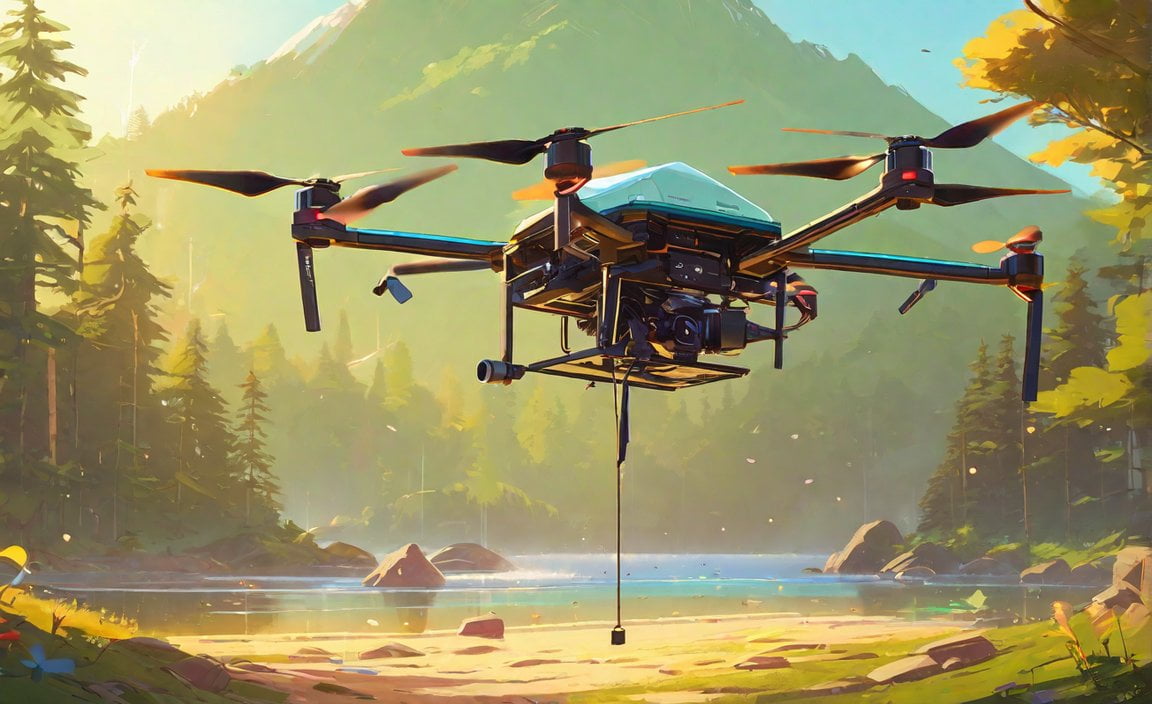
FAQ
Q1: What are some interesting facts about drone technology?
A1: Drone technology has a long history, with exploration beginning as early as the 1800s. Additionally, a Hollywood actor is credited with developing the first hobby drone, and the first US drone permit was issued in 2006.
Q2: Which country was the first to build drones?
A2: Israel was the first country to build drones, according to historical records.
Q3: What are some common uses of drones?
A3: Drones have a wide range of applications. They are used for photography, in farming as effective tools, and for humanitarian services. Additionally, the US military utilizes drones extensively.
Q4: What are the potential future advancements in drone technology?
A4: The future of drone technology holds promising advancements. Some possibilities include the development of autonomous drones and the integration of artificial intelligence into drone systems.
Q5: What are the regulatory challenges facing the commercial viability of drones?
A5: Despite their significant economic benefits, drones face regulatory gaps that hinder widescale adoption. These gaps encompass aspects such as safety, privacy, airspace management, and licensing requirements, which need to be addressed for drones to achieve their full commercial potential.
- Star Ring Trends: Etsy vs Amazon - March 28, 2025
- Boost Pollinator Habitats: Baby Blue Eyes Sustainable Farming Guide - March 28, 2025
- Protect Big Black Bears: Effective Conservation Strategies - March 28, 2025
